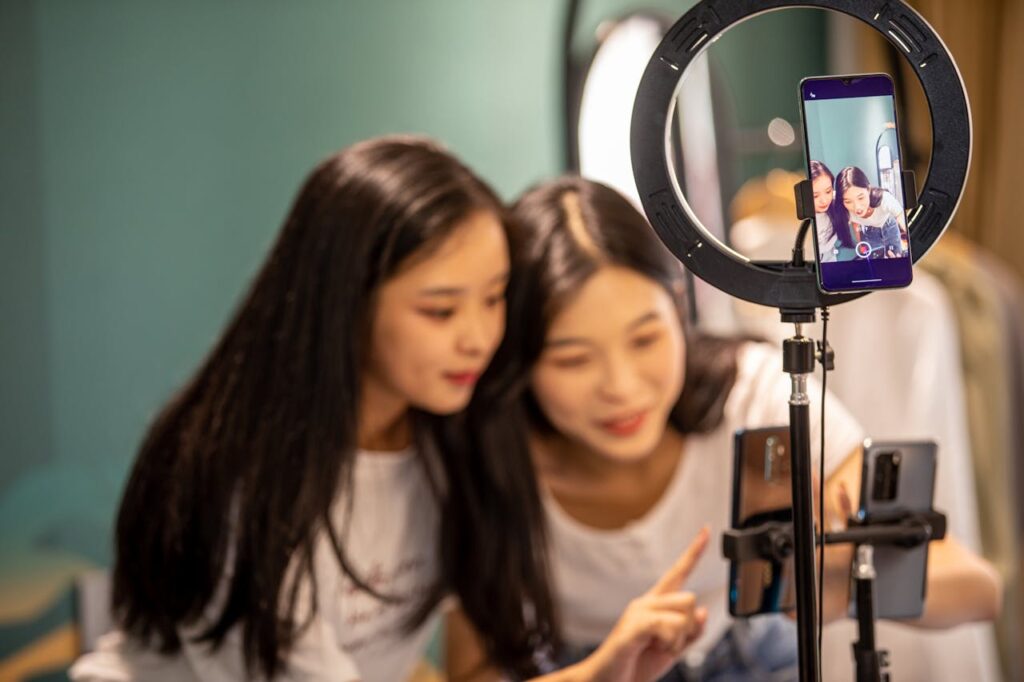In a world where attention spans are shrinking and content consumption is faster than ever, brands are under immense pressure to create video content that captures attention and drives meaningful engagement.
Snapchat has released The Modern Brand Guide: Creating Scroll-Stopping Content on Snapchat in collaboration with VaynerMedia and Realeyes.
This comprehensive study uncovers the secrets to crafting content that resonates with today’s audiences. Let’s break down the key insights and explore what this means for the future of brand marketing.
By the way, if you want to stay connected and know everything about social commerce and never miss a beat, join Logie today! Click here
1. The Power of Authenticity
The study reveals that user-generated content (UGC) and platform-native, DIY-style videos are perceived as more relatable and trendy.
Such content generates 19% higher happy emotions and captures attention for 13% longer than the study average. This is especially true for Millennials, who value authenticity over polished perfection.
This means embracing a more raw and unfiltered approach to brand content creation. Gone are the days of meticulously crafted 30-second TV spots.
Instead, brands need to create content that feels like it’s coming from a friend, not a corporation. Snapchat’s platform is the perfect place to experiment with this style, with its casual and playful vibe.
2. Creators as Catalysts: The Snap Star Advantage
Snap Stars Snapchat’s handpicked premier creators are proving to be a game-changer for brands. Collaborations with these creators capture 33% more attention than the study average.
For example, a beauty brand partnered with Snap Stars to launch a new makeup line with 2x higher product awareness, 3x higher return on ad spend (ROAS), and a 90% increase in incremental sales from new buyers.

The takeaway? Creators are influencers and cultural connectors who can help brands tap into new audiences. By leveraging their creativity and platform expertise, brands can create content that feels native and authentic.
3. AR Lenses: The Future of Interactive Branding
Sponsored AR Lenses are Snapchat’s standout feature, and the study confirms their effectiveness. Content featuring AR Lenses drives 40% higher brand recognition and 32% higher recall than the study average.
These lenses are not just gimmicks they are powerful tools for creating memorable, interactive experiences.
Brands that embrace AR Lenses can create playful, engaging content that resonates with Snapchat’s audience. Whether a virtual try-on for a beauty product or a fun filter that ties into a campaign, AR Lenses offers a unique way to blend entertainment with branding.
4. Hacking Content for Attention
Content that “hacks” the platform by breaking out traditional placement dimensions performs exceptionally well.
This type of content sees 14% higher ad likeability and 9% higher persuasion, particularly among Gen Z. By thinking outside the box and creating content that surprises and delights, brands can stand out in a crowded feed.
This approach requires creativity and a willingness to experiment. Brands that push the boundaries of what’s possible on Snapchat can capture attention in ways that traditional ads simply can’t.
5. Edutainment
The study introduces the concept of “edutainment” content that combines education and entertainment.
This type of content drives 12% higher emotional reactions, captures attention 30% longer, and yields 17% higher persuasion than the study norms. With 46% of Snapchatters watching videos for inspiration and tips, brands have a unique opportunity to provide value while entertaining.

For example, a cooking brand could create short, fun videos that teach quick recipes, or a fitness brand could share workout tips engagingly. The key is to make learning fun and accessible.
6. Know Your Audience
Snapchatters are drawn to content that aligns with their interests. Food and entertainment content are the most popular categories, with 55% and 54% engagement, respectively.
However, preferences vary by demographic: females are likelier to engage with fashion, shopping, and health-fitness content, while males lean toward sports and personal finance. Millennials are more interested in beauty and home improvement than Gen Z.
Brands should tailor their content to align with these passion points while staying true to their core values. Brands can create relevant and engaging content by understanding what their audience loves.
7. The Importance of Strong Branding
While creativity and authenticity are crucial, the study reminds us that strong branding remains essential.
Content with prominent branding, such as logos in the first three seconds, performs well for ad recall (17% higher), ad likeability (11% higher), and persuasion (26% higher).
This is a reminder that no matter how creative or native the content feels, the brand must still be front and centre.
Implications for Marketers
The findings from Snapchat’s study underscore the importance of adapting to the evolving content landscape.
Brands must embrace authenticity, leverage creators, experiment with AR, and align with audience interests. At the same time, they must balance creativity with strong branding to ensure their message sticks.
With its focus on creativity and interactivity, Snapchat’s platform offers brands a unique opportunity to connect meaningfully with younger audiences. However, the lessons from this study are applicable beyond Snapchat.
As the digital landscape evolves, brands prioritising human-centred, emotionally resonant content will thrive.
Snapchat’s Modern Brand Guide is a treasure trove of insights for brands looking to create scroll-stopping content.
By embracing authenticity, leveraging creators, and experimenting with new formats like AR Lenses, brands can capture attention and drive tangible business outcomes. However, the challenge lies in balancing creativity with strategic branding.
As the platform wars heat up, Snapchat’s focus on innovation and user experience positions it as a leader in the space. But the real question is: Are brands ready to adapt? In a world where attention is the most valuable currency, the brands that succeed will be the ones that dare to be different.











